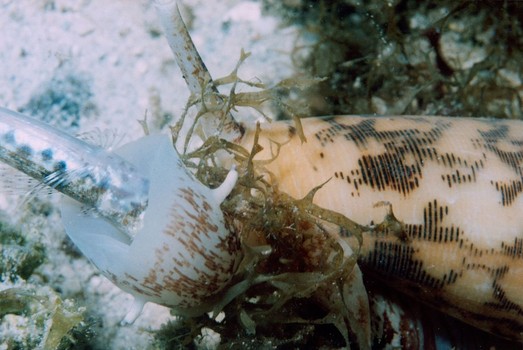At least two species of venomous cone snails have developed a means to catch food fish by using insulin to slow down the fish they prey on. Helena Safavi-Hemami from the Department of Biology at the University of Utah and colleagues are the first to find the insulin component of the toxic cone snail venom.
Cone snail venom from two known fish hunting species of cone snails, Conus geographus and Conus tulipa, were analyzed. The venom contains neurotoxins that reduce the response of prey fish nerves to predation. The venom mixture called “nirvana cabal” was also found to contain a variety of insulin that is not snail insulin but has the chemical structure and action of fish insulin. The venomous insulin is produced in the venom glands of the snails.
The cone snail ejects the venom mixture into water when fish are nearby. The insulin in the venom induces hypoglycemia in entire schools of fish that swim near the snails. Hypoglycemia makes the fish swim slower so the fish are easier to catch by the not so swift snails.
This is the first known instance of an animal that uses insulin as a weapon to trap prey. There are 600 different species of cone snails living in mostly warm waters across the world. The snail gets its name from the shape of the shell that is conical. To date, only two species are known to use insulin to help trap prey but there may be more. Both species are considered to be endangered.















